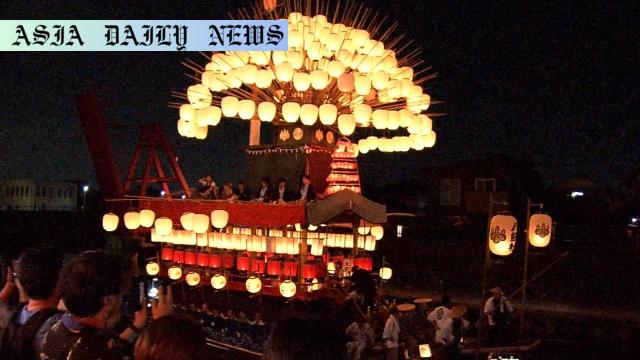Festival: Women joined for the first time to revitalize a 400-year-old central Japan tradition, preserving its legacy for future generations.
For the first time, women participated in Sunari Festival after 400 years.
The move was aimed at reviving tradition amidst a dwindling participant count.
The festival holds UNESCO cultural heritage status for its significance.

Introduction: Women Break Barriers in Historic Festival
In a remarkable move that blends tradition with inclusivity, women have participated for the first time in the Sunari Festival held in central Japan’s Aichi Prefecture. The event, which has been celebrated for over 400 years, is a cornerstone of Japanese culture, aiming to promote bountiful harvests and good health. This tradition, although preserved for centuries, has had to adapt in the face of an aging demographic and declining participation. The introduction of women into this sacred and community-centric event marks a momentous shift, ensuring its continuity and evolution for future generations.
A Rich History Rooted in Cultural Significance
The Sunari Festival, held in Kanie Town, carries immense cultural and historical significance. Recognized by UNESCO as part of the Float Festivals of Japan, it encapsulates centuries of devotion, artistry, and community effort. Traditionally organized by local Shinto shrines, the festival has been symbolic of both spirituality and unity. The illuminated river cruise, featuring a boat adorned with 200 glowing lanterns, stands as the event’s highlight. The accompanying melodies from flutes and drums add a rhythmic depth, bringing the festival environment to life. However, despite its cultural endurance, contemporary challenges such as demographic shifts and lifestyle changes have posed threats to its sustainability.
Integrating Women: A Progressive Leap
A groundbreaking step was taken this year when the event organizers invited women to participate for the first time. Seven women joined the traditionally male-dominated festivities, marking a shift in cultural norms. This initiative not only addresses the shrinking participant base but also underscores the importance of inclusivity in preserving heritage. Baba Tsuneyuki, the head of the Sunari Cultural Properties Protection Committee, highlighted the critical role of women in revitalizing the festival. He noted that their involvement injects new energy and vibrancy, ensuring the event’s survival.
Shared Joy and Community Preservation
For the local women who participated, this was not just an opportunity to join a historical event but also to contribute to their town’s future. A mother-daughter duo, for instance, expressed their commitment to keeping the festival alive. This sentiment reflects the broader sense of community pride and responsibility that the festival invokes. By encouraging women’s participation, the organizers have widened the circle of guardianship for this longstanding cultural treasure, creating a shared sense of ownership and responsibility for its preservation.
The Road Ahead
The integration of women in the Sunari Festival is a bold move, signaling a willingness to embrace change while preserving tradition. This shift not only reflects the evolving societal values but also serves as a blueprint for other traditional events facing similar challenges. By involving a diverse range of participants and reimagining old traditions in contemporary ways, historical events like the Sunari Festival can ensure their survival in an ever-modernizing world. Moving forward, community engagement and intergenerational collaboration will be key factors in sustaining this vibrant cultural legacy.



Commentary
The Importance of Adapting Traditions
The Sunari Festival shows a powerful example of how tradition can adapt to the changing dynamics of society. As a 400-year-old cultural legacy, it has stood the test of time, but its sustainability faced challenges in recent years due to an aging population and declining interest among the youth. By introducing women into a traditionally male-dominated event, the organizers have broken barriers and redefined heritage. Such flexibility is essential in ensuring that cultural practices remain relevant and continue to thrive in modern contexts.
Women as Catalysts for Revitalization
The inclusion of women in the Sunari Festival is not just a practical decision but a symbolic one. Historically, traditional events often perpetuate rigid gender norms. This bold move signifies a shift towards inclusivity, acknowledging the vital role women play in society and culture. Their participation doesn’t detract from the sanctity of the festival; instead, it strengthens it by bridging gaps and engaging a broader demographic. This action might inspire other cultural and traditional organizers to reconsider their own frameworks, seeking ways to invigorate their heritage while fostering equality.
A Blueprint for the Future
As challenges such as urban migration, aging demographics, and changing societal values impact cultural traditions globally, the Sunari Festival’s approach can serve as a model. By actively involving underrepresented groups and reimagining traditional roles, communities can safeguard their heritage while remaining inclusive and progressive. The key takeaway is the importance of adaptability—cherished practices can coexist with evolving societal norms. The Sunari Festival’s transformation is a testament to how blending tradition with innovation ensures its preservation while embracing the future.